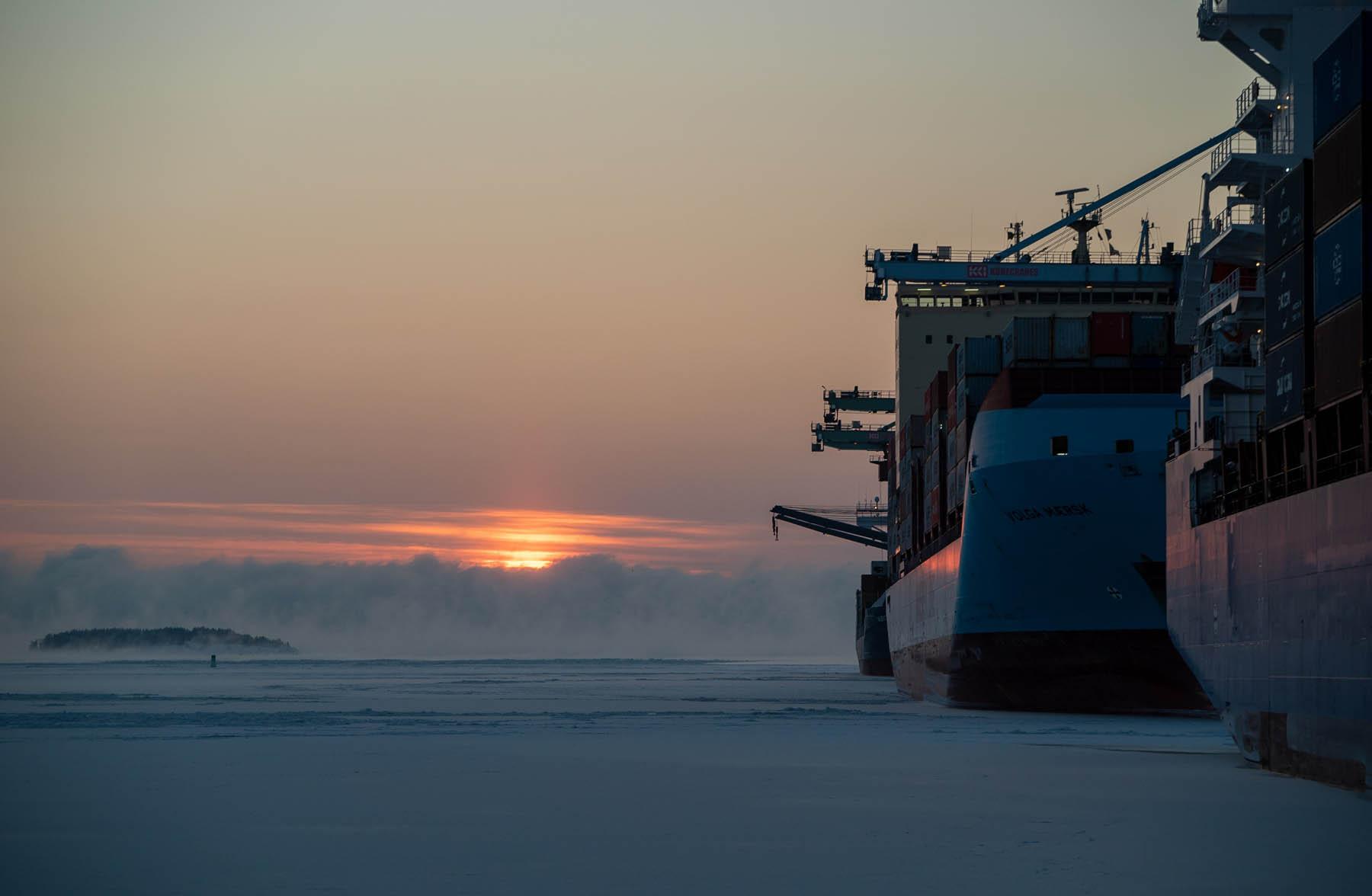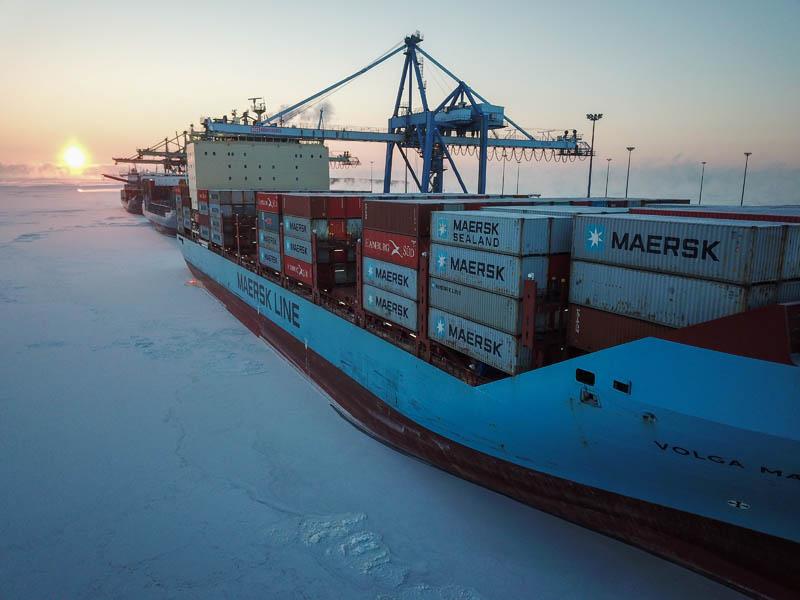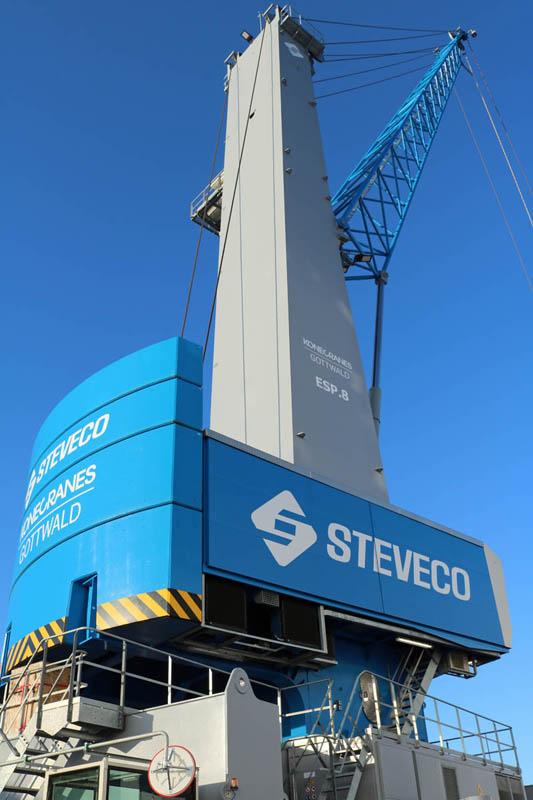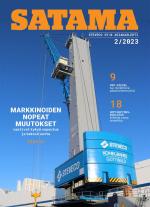When the markets fluctuate, ports are flexible

The consequences of the Russian war of aggression can be seen in Finnish industry and port operations. In changed circumstances, the ability to adapt and be inventive is ever more important.
The Russian war of aggression that began on 24 February 2022 gave port operators a lot to think about.
“Almost all shipping companies withdrew from Russia. We received many inquiries about how to get containers out of Russia, and how to deal with all the cargo that was going there. We accumulated a lot of containers for a while,” says Tapio Mattila, Steveco’s Senior Vice President of Marketing and Sales and Container Operations.
As a result of the war, trade between Finland and Russia collapsed. In August 2023, Russia accounted for one per cent of Finland’s exports and two per cent of imports. In the 2000s, the respective figures were twelve and fourteen per cent at their highest.
The minor importance of transit
A greater concern than the accumulation of containers was whether the shipping companies would continue traffic in the Gulf of Finland when the Russian traffic ceased. If the traffic were to stop, where would Finland have received containers from?
The threats did not materialise, as the container ship traffic to Finland has remained almost unchanged.
“The only thing we lost was transit traffic. However, that had been decreasing for a long time, when Russian ports were developing, and Russia began to shift its traffic to its own ports.”
In peak years, there were 13,000 transit containers per month, and before the war in Ukraine began, the number dropped to between 2,000 and 3,000 containers per month. The number now is about 500 containers per month. They contain goods that have not been barred from export. The drop in the number of containers from the pre-war period is less than ten per cent of HaminaKotka’s total container traffic.
The effects of the war hit the forest industry from two directions: raw timber imports ended, and the demand for products weakened. Both have had an impact on port operations.
At its best, Russian raw timber accounted for a tenth of the forest industry’s wood. The shortage of raw materials hit the forest industry in Finland at a time when demand for products fell as a result of the global downturn.
Uncertainty increased.
“The supply of wood decreased, and the wood that was put on the market became more expensive. At the same time, demand for products decreased in the global market for all forest industry products. We’re still in this situation. Factories have closed, and there are periods of downtime all the time,” Mattila says.
When timber imports from Russia stopped, the forest industry reacted quickly. Raw timber has flowed especially to the ports of HaminaKotka (60 per cent), but also to Rauma, Helsinki and Hanko. Wood has been imported from Estonia, Latvia and Sweden. Imported wood volumes have halved from an average of 470,000 tonnes per month in 2020 to about 230,000 tonnes per month in 2022.
The import of raw timber to HaminaKotka applies to Steveco only in terms of forwarding. Wood is imported on small vessels that are not operated in line shipping quays, but in other areas in Mussalo.
Significant decrease in export volumes
It is difficult to present comparable figures for forest industry products, as the industry was hampered by the spring 2022 Paperworkers’ Union strike and the spring 2023 dockworkers’ strike. In turn, the 2021 figures were affected by the Covid-19 pandemic.
However, the tonnage handled by Steveco says something about the development of export volumes.
“For a long time, our Roro terminal traffic was 180,000 to 195,000 tonnes per month, and now it is 140,000 to 160,000 tonnes. That’s really weak,” Mattila says.
Container volumes have not decreased in the same way, as Steveco’s market share has grown with the introduction of new services.
“Compared to normal conditions, we are 2,000 export containers per month short, which means 47,000 tonnes. This means roughly 15 to 20 per cent less tonnage than normal,” Mattila says.
Mattila, who has been monitoring the cargo volumes of ports for years, has noticed a rapid transformation in the market in recent years. Changes are now more drastic and more sudden than before.
“In November, we have had difficulty coping with the volume of work at the Kotka container terminal.”
Excellent flexibility
According to Alina Koskela, Logistics Affairs Manager at Finnish Forest Industries, ports have been flexible in the face of various market changes.
“When traffic in the Saimaa Canal ended, there was a fear that 50,000 truckloads would be needed to replace the canal’s transport capacity. This was solved with new operating methods by importing wood from new import directions through ports. A recent decline in demand has reduced transport pressure,” Koskela says.
Flexibility also means that it must be possible to increase capacities quickly as the market situation improves.
“Security of supply will continue to be important to us. We need to be prepared for the next rising cycle. Finnish Forest Industries expects ports to continue to be responsive and proactive, as situations may change quickly. In a tough economic climate, cost-effectiveness and new ideas are needed,” Koskela says.
In recent years, millions of euros have been invested in the port of Mussalo, for example, in the construction of pulp terminals and infrastructure supporting their operations. Steveco can serve its forest industry customers in one place.
“The customer can deliver the pulp to us as whole trains of material, whether it is break bulk or containerised. When the market is changing at a very fast pace, it is important that we have a flexible approach,” Mattila says.
The change in the market has increasingly directed pulp flows to Mussalo, so much so that the construction of additional facilities there is being considered, Mattila says.
Strong faith in the forest industry
Demand for forest industry products will rise sharply in the next decade. Consultancy firm AFRY forecasts a 32 per cent increase by 2035 compared to 2019 levels. At that time, the products were sold for EUR 715 billion.
“We are now in a downturn, which is strongly reflected in ports, because most of the forest industry’s export products go through ports,” says Koskela.
The production figures of the Finnish forest industry for the third quarter of 2023 make grim reading: production decreased by between 13 and 22 per cent in all main product groups compared to the previous year. The smallest increase has been in sawn timber, and the largest in board.
The decrease in forest industry exports can be made up for in ports with innovative new business opportunities.

“A lot of investments to replace traditional import volumes in the forest industry are being developed in Finland, and of course, the forest industry is also making investments by renewing its strategy for the future. These include Metsä Group’s large-scale investments, Stora Enso’s investment in Oulu, and potential investments in the battery industry,” says Satu Lindeberg. Lindeberg is the Managing Director for Finland and Area Head of FMCG and Forestry at the logistics and shipping company Maersk.
The distribution of Finnish forest industry export flows between different ports has increased. This change has not caused any major changes to Maersk’s business, however.
“Our operations are agile, following the needs of our customers. Since we have our own ships and containers under our own control, we can make decisions about such things as the routing of feeders quite flexibly,” Lindeberg says.
Maersk develops its operations with port operators to meet the needs of the Finnish forest industry.
“The importance of logistics for the competitiveness of the forest industry is great. The functionality of logistics, taking end customers into account, and cost-effectiveness are key competitive factors for the forest industry.”
The importance of environmentally friendly logistics increases when the transport chain is changed to minimise its environmental impact. Maersk has distinguished itself in this field by introducing the world’s first container ship fuelled by eco-friendly methanol in September 2023.
There will be about thirty such vessels within a couple of years. They are an important part of Maersk’s journey towards carbon neutrality by 2040.
When Lindeberg assesses the changes in the goods flows of the Finnish forest industry in the coming years, she sees an increase in the volumes of the pulp and packaging industry and a decrease in conventional paper roll exports.
“Hopefully, the volumes of timber will remain the same. The quality of Finnish forest products and timber is first-class in the world and will continue to be valued.”

Continuous development
Steveco is developing its operations amidst major changes. In early 2023, a second Mantsinen 300 crane was purchased for the Mussalo D-area to provide power for loading. And at the beginning of November, the new Konecranes Gottwald harbour crane began its work in the Hietanen port.
A unique service for customers is a CO2 emissions calculation service provided by an external expert. The calculation model provides data broken down into various categories, for example, by customer, cargo, ship, container or type of goods.
“Our next step is to reduce emissions. For a year, we have been experimenting with hydrotreated vegetable oil (HVO) in all our machines. Our customers can choose whether to use renewable fuel in their cargo handling, allowing them to report a 90 per cent reduction in CO2 emissions for port operations,” says Mattila.
Preliminary customer feedback has shown that customers mainly choose renewable fuel. If a sufficiently large number of customers continue to choose it, Steveco’s entire fleet will switch to using low-emission renewable fuel.
Body: Jukka Nortio Photos: Thomas Halloran and Elina Harjama

